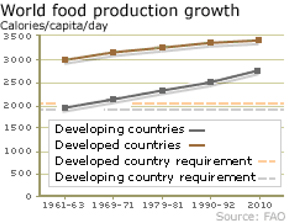Ten fundamentals about bioenergy: Part 9
Editor’s note: This article is from the archives of the MSU Crop Advisory Team Alerts. Check the label of any pesticide referenced to ensure your use is included.
Fundamental #9: Food vs. fuel concerns should not preclude development of a new bioeconomy.
This is the ninth in a series of articles on bioenergy. We started this series last season. The previous installment focused on how both annual and perennial crops are necessary to create the best portfolio of bioenergy feedstocks. This article and the next one will focus on what has been a somewhat controversial issue with regard to bioenergy: food vs. fuel.
In my experience working with farmers, one thing is very clear to me, farmers take their mission of feeding the world seriously and they feel a sense of pride in their ability to serve this critically important role for mankind. I do not see this most important role of feeding the world changing – however, I do believe farmers have the capacity to add “fuel” to their short-list of products which currently includes “food, feed and fiber.”
We have a lot of people to feed. Since 1960, the global population has more than doubled, from three billion to the current level of over six billion. However, to date, technological advances have kept up with human demands for food. In fact, there is currently more food available per capita than there was in 1960 when the world had half the current population. Figure 1 shows data from the United Nations, Food and Agriculture Organization, charting the increasing global food calories produced per capita per day. The results show that we currently produce food in excess of the global per capita calorie requirement. Unfortunately, there are still millions of starving people in the world. But the facts suggest it is a result of a food distribution issue and not one of production.
Figure 1.

To meet global projections for food and current policy projections for renewable fuels, the International Food Policy Research Institute predicts that crop yields will need to increase about 45 percent and the available land base will need to increase approximately 15 percent over the next 30 years. Whether or not we can reach this goal is a legitimate question to ask. Historically, we have achieved similar increases in production through improved crop genetic yield potential and technological advances in plant nutrient management. We know that we receive plenty of sunlight energy to drive a food, feed, fiber and fuel agricultural production system. In fact, it is estimated that mankind uses only a fraction (about 0.02 percent) of the solar to earth radiant energy annually. However, water and plant nutrients, which all cycle through agricultural production systems, will need to be managed more judiciously than they have been in the past if we hope to meet these new production goals.
The tenth, and final, article in this bioenergy series will focus on how we can expand our existing land base in a manner that is protective of the environment. Please stay tuned.
Read part 1, part 2, part 3, part 4, part 5, part 6, part 7, part 8, and part 10 of this series.



 Print
Print Email
Email




